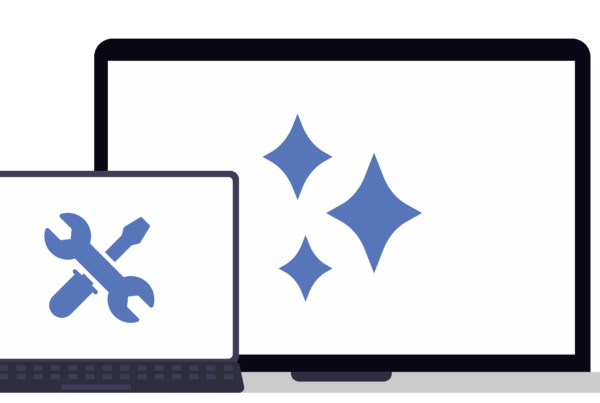
In technology terms, twenty years constitutes nothing short of a lifetime. Given that we live in a world where change is a constant, remaining competitive requires not only thinking outside the box…but also completely reimagining it.
In the spirit of geeky software-fuelled celebrations, we have compiled this glance back through the years to illustrate just how much has happened in IT since 1998. We hope you enjoy it as much as we did!
1998 – Hello Google
Larry Page and Sergey Brin established everybody’s favourite search engine in 1998. At the time, Google was just one of many. Today, however, it is a fundamental part of a person’s internet experience – whether that is time spent working or just browsing around.
1998 – Diamond Rio PMP3000, say what?
You’ll be forgiven for not remembering this device or even never having heard of it. But the Diamond Rio was the first successful portable audio device that let users download MP3 files (or rip them from CDs). At the time, the $200 device could store 60 minutes of audio and enthralled many. Perhaps most interesting, it pre-dated the first Apple iPod by a good three years.
1999 – TIVO, Welcome!
The advent of TIVO marked the start of a fundamental shift in how people would start watching television. With TIVO, people can watch what they want, when they want, and even skip ads. Sure, it might seem old-fashioned when compared to what is available today, but it laid the groundwork for DVR (digital video recording) worldwide.
2001 (January) – Wikipedia and user-generated content
What many people take for granted to solve pub quizzes today, was launched at the start of 2001. The first, free user-generated online encyclopedia quickly became the reference site of choice. It also heralded the start of other user-generated sites. In February 2005, video-sharing site YouTube had launched and became a pop culture addiction turning nobodies (for example Susan Boyle, lonelygirl15, and Obama Girl) into viral demigods.
2001 (July) – Napster no more
The granddaddy song-swapping service of them all, Napster, was shut down after record companies in the US sued it for copyright infringement. Despite its demise, the groundwork was established for a new age of file sharing. It opened the proverbial floodgates for other services that would change how we obtain and share music and videos.
2002 – Digital storage, finally!
Of course, sharing files meant we needed to have more storage at our disposal. This marked the beginning of how information would be stored on digital devices instead of analogue ones. A study published in 2011 estimated that the world’s technological capacity to store information in analogue and digital devices grew from less than three exabytes in 1986, to 295 exabytes in 2007, and doubles roughly every three years. Put that on your CD and smoke it.
2003 – A wireless world
Here we saw the introduction of the 802.11g wireless transmission standard that introduced us to a better way of connecting our devices – instead of relying on wires or difficult-to-use networking protocols. Wireless routes started emerging that could cover an entire house, coffee shop, or small office from a single point. Miraculous!
2003 – Microsoft Xbox Live, geek heaven
Xbox Live (which was available as an add-on purchase for $70) upgraded the gaming experience to something that would be completely internet-connected. It started by enabling additional game content to be downloaded (although Zero-Day patches are hardly fun even today) and quickly grew to include streaming and video-chat services (including the likes of Netflix and Skype).
2003 (March) – Hello social media, goodbye time
Friendster (rest in peace) saw the inception of the frenzied social networking lifestyles we have today. Time magazine named it one of the 50 coolest Web sites of 2004. However, that same year saw a certain Harvard student launch Facebook. With the likes of Twitter, Instagram, <insert platform of your choice>, following, the way we share our personal experiences and consume content would change forever.
2005 – Google Maps, world domination
Today, a standalone GPS might seem like a novelty for many. Yet the launch of Google Maps made it possible for us to use our phones as navigational devices – sorry TomTom and Garmin. At last count, 150 million Google Maps users plot close on 20 billion kilometers of routes each year. Did we hear ‘market monopoly’…anyone?
2006 (November) – Nintendo Wii, the fun begins!
Thanks, in large part, to the Nintendo Wii, the days of just sitting on the couch with a controller playing video games would turn into much more active affairs. Now, we could amuse ourselves (just imagine how it looked) by performing actual tennis strokes and boxing punches in front of the screen. Sadly, many TVs did perish due to angrily thrown controllers.
2006 – Fibre, & connectivity bliss!
Scarily enough (considering it is only now starting to become mainstream in SA), fibre had its beginnings in 1880. But it was only in 2006 when telecoms providers started pushing it beyond businesses and into homes.
2007/2008 – Apple iPhone and App store, game-changers
The launch of the iPhone and App store are widely perceived as the starting point for the pervasive smartphone and app culture that we take for granted today. Mobile tech was irrevocably changed with the introduction of the original iPhone, with competitor offerings (and stores) providing us with more options than ever before.
2008 – Blockchain enters our brains
The first blockchain was conceptualised in 2008 and implemented the following year as a core component of the cryptocurrency bitcoin, where it serves as the public ledger for all transactions on the network. Just imagine if you had purchased a few bitcoins then, what you would be worth today? Even if the cryptocurrency is proving incredibly volatile, it has created a deep-seated awareness of the potential of blockchain technology that is resulting in numerous business cases.
2010 – Cloud computing, efficiency soars
This year saw the introduction of Microsoft Azure as well as the OpenStack project. The latter intended to help companies provide cloud-computing services on standard hardware. It might be inconceivable to think of a time whereby we could not save our photos, documents, and so on in an online environment. We have the work done in 2010 to thank for this.
2010 – Virtual reality becomes reality
The prototype of the Oculus Rift was designed in 2010. Built on a shell of another virtual reality (VR) headset, it was only capable of rotational tracking. Following Facebook’s acquisition of Oculus for $2 billion in 2014, Sony’s launch of Project Morpheus (its code-name for PlayStation VR), and Google Cardboard (a DIY VR viewer for smartphones), we started embracing the fun (and educational uses) of going the VR route.
2011 – Artificial intelligence, the data revolution
Thanks to our reliance on mobile, the prevalence of the cloud, and other innovations, the need for artificial intelligence (AI) to manage and analyse the large amounts of data being generated became essential. Big Data could now be applied to many new problems – and analytics could more accurately identify key customer requirements for more innovative products and services.
2013– Ransomware is the new evil
Of course, all this data, sharing of content, cryptocurrency, and usage of apps resulted in viruses and other malicious software becoming more sophisticated. Ransomware started targeting businesses and consumers alike, and it is not going away any time in the foreseeable future. Our always-on environment requires us to be more vigilant than ever before, with both SMEs and large enterprises now forced to look at things like cyber insurance and regular internal training programs.
The crazy continues…
Yes, it has certainly been a wild ride over the past two decades – and things are not slowing down any time soon. With AI technology and the blockchain still in their nascent stages, you can be sure that radical change is nearby. We look forward to being part of your digital experience in the years to come!



